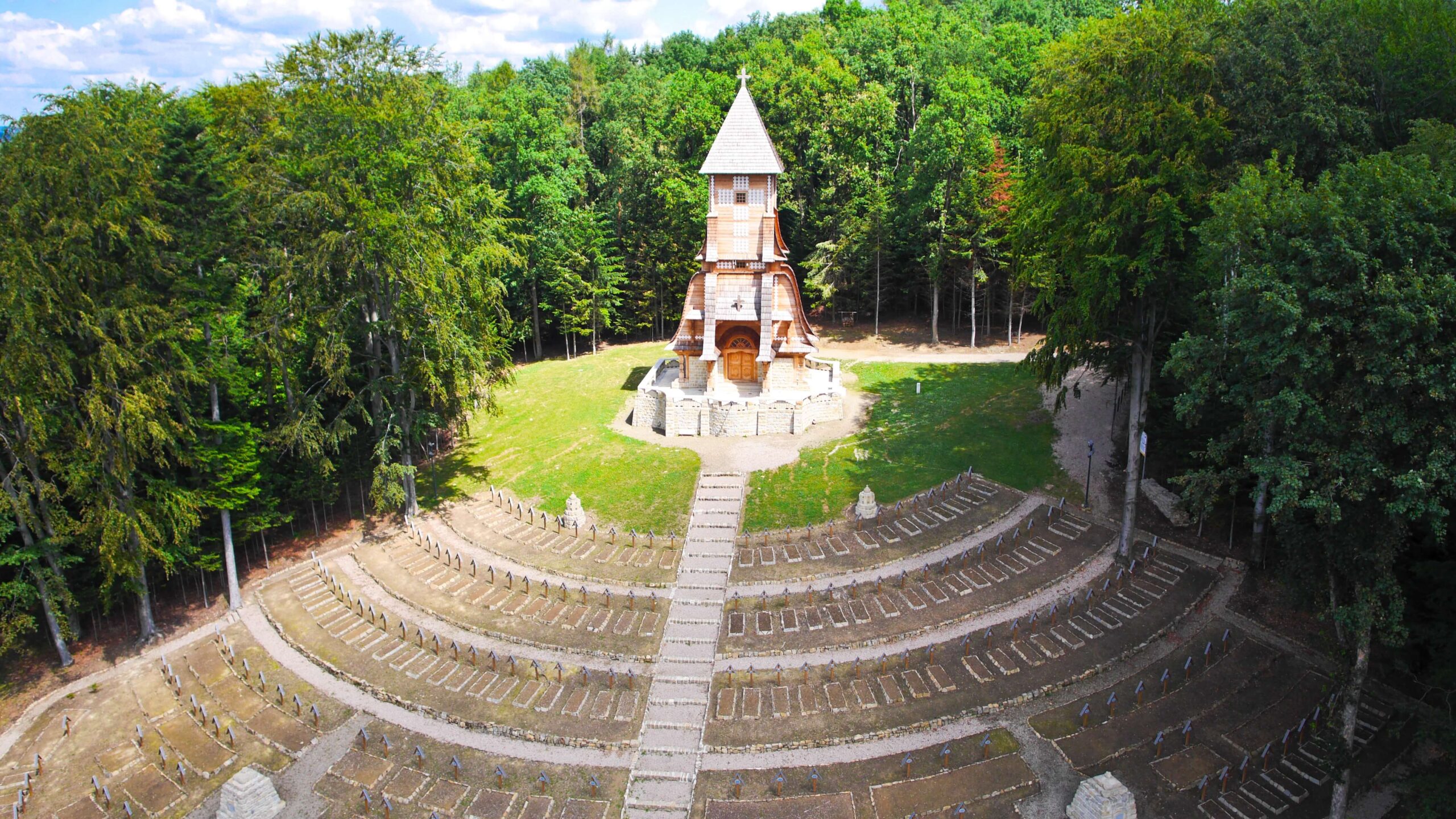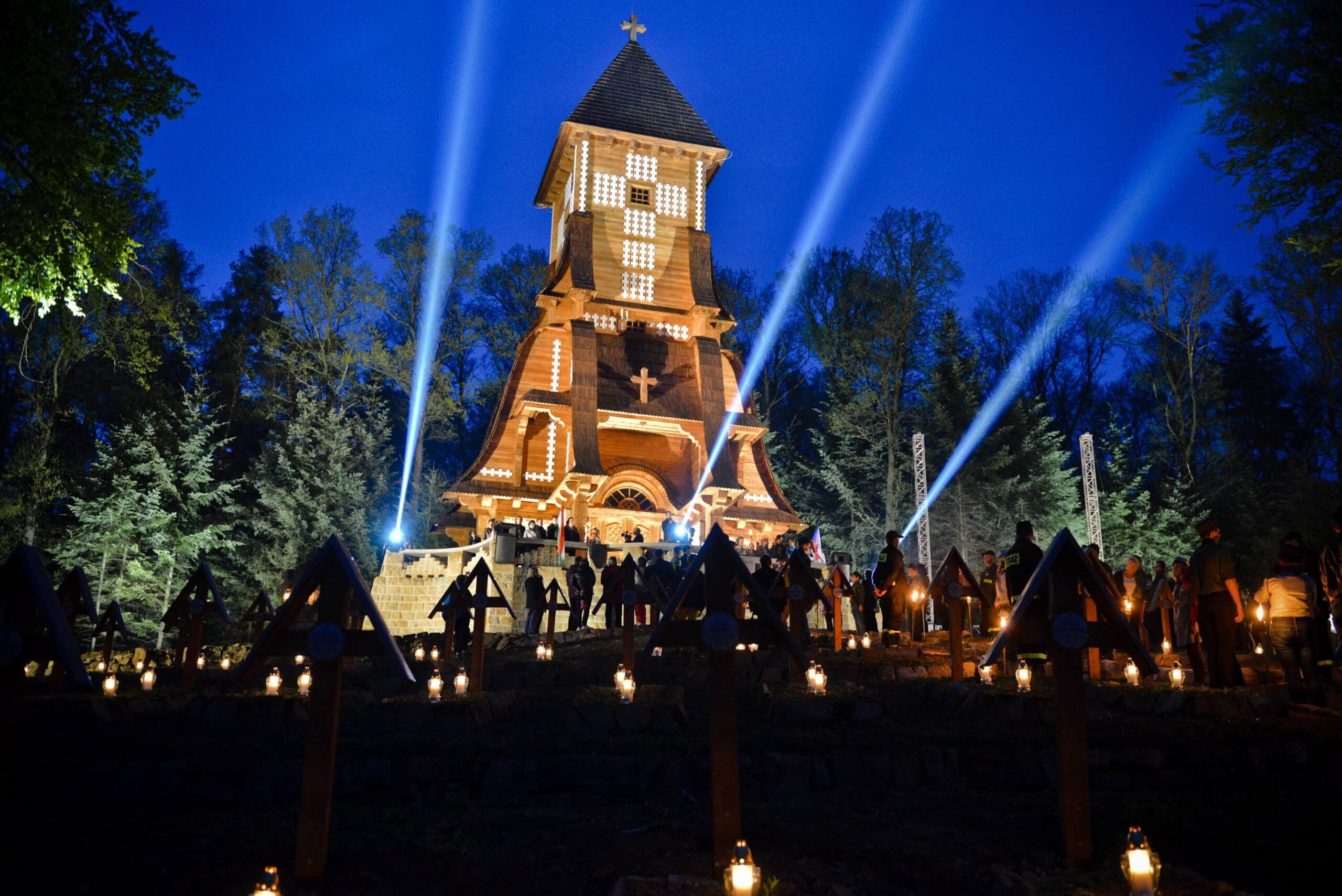This website uses cookies so that we can provide you with the best user experience possible. Cookie information is stored in your browser and performs functions such as recognising you when you return to our website and helping our team to understand which sections of the website you find most interesting and useful.
World War 1 Eastern Front Cemetery No. 123



The EHL Site
In many aspects, Łużna Commune is an exceptional part of Gorlice Poviat. Each town in this Commune takes pride in its rich history, tradition and considerable cultural legacy developed by many generations of its inhabitants. Varied landscape, interesting historical sites and beautiful nature make this place ideal for hiking, cycling, and driving trips.
The cemetery is where, against a background of tragic events of World War I, the fates of soldiers of various nations became intertwined, irrespective of which army they served in and regardless of their ethnicity or religion. More than 1,200 soldiers were buried on this cemetery: 912 soldiers of the Austro-Hungarian Army (nearly half of them were Polish), 65 soldiers of the German Army and 227 soldiers of the Russian Army. It is surrounded from the front by a wooden fence with stone pillars. The entrance gate is between two large columns, each crowned by a styled helmet. A statue in the shape of a sarcophagus is opposite the entrance. There are 46 collective graves and 829 individual graves at the cemetery. Soldiers were buried in quarters according to their nationality and regiments. There are monuments next to each grave group. Grave units are connected by alleys, changing into stone steps in steep places. The graves have stone framings with wooden crosses. Also, there is a separate quarter for the killed whose nationality is unknown. The memory of the unknown is recalled by the following inscription:
“Separated by life –
Connected by death –
Their names unknown
Friends and foes.
Who were they? What did they man?
It is all in the past. One thing remains certain: Their loyalty!”
Łużna-Pustki War Cemetery No. 123 was the site of official celebrations of the 100th anniversary of the Battle of Gorlice. The Pustki cemetery was also a pilgrimage site of Hungarians who wanted to visit the tombs of their compatriots that died on the front of WWI. Owing to the support of many people and institutions over the react years, it was possible to restore this cemetery and rebuild the cemetery chapel (pl. Gontyna). In particular, such support was provided inter alia by the Voivode of Lesser Poland (Małopolska), the Marshal’s Office of Lesser Poland Voivodeship and thanks to own funds of the commune.
European dimension
Places connected with World War I constitute important heritage for our residents in religious, historical and artistic aspects. Łużna-Pustki war cemetery no. 123 is a symbol of tragic events of World War I that influenced the history of Europe but also a testimony to humanitarianism which was expressed in the respect for tombs of soldiers killed in action, regardless of their nationality or the army they belonged to. This cemetery constitutes multi-national cultural heritage which is unique on a European scale and promotes such values as: respect for human dignity, equality, brotherhood between people of different nationalities, reconciliation, peace. It has also its undeniable spiritual, religious, educational and artistic dimension.
The organization
This cemetery No. 123 Łużna Pustki is often visited by domestic and foreign tourists who follow the paths of World War I. We are visited by numerous groups of pilgrims, tourists and young people, International Youth Meetings are organised here as well as Military camps with the participation of representatives from Germany, Hungary, and Poland. Our mission is to raise awareness of the historical and European significance of the site through appropriate information activities, signposting and staff training by new multilingual information boards (placed). Secondly, we have already developed history lesson plans for school students and an online guide to the cemetery and organised Annual International Youth Meetings or annual heritage competitions for primary school students. As far as our activities connecting to the tourists are concerned our Commune has produced brochures and promotional films in several language versions.
